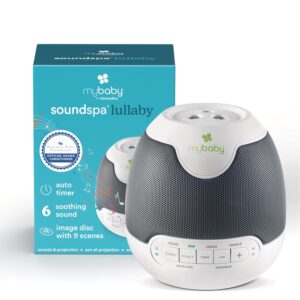A peaceful baby at bedtime is possible if you create a serene and calming bedtime routine. Whether you are a first-time parent or struggling with sleepless nights, building a structured bedtime routine for your baby can solve all your fatigue and restlessness.
Consulting a guide to create a sleep routine is better. For your convenience, here is a full guide breaking down everything you need to know. From how to make the perfect baby bedtime routine, when to start one, to what simple steps you can take to help your little one fall asleep and stay asleep longer. So, let’s get started!
Why a Bedtime Routine Matters for Baby:
Just like adults, newborns want a consistent schedule. A predictable newborn bedtime routine signal’s your baby that it’s time to lie down. This also helps in:
- Encouraging longer sleep intervals
- Improving the quality of sleep
- Maintaining emotional security and bonding
- Reducing nighttime fussiness
Crafting a bedtime routine will also help the baby understand the difference between day and night. Routine, especially, helps in the early months when the baby’s internal clock is still developing.
When Should You Start a Bedtime Routine?
Most babies benefit from a gentle infant bedtime routine starting as early as 4-8 weeks old. At this stage, the sleep schedule acts as a basis for future sleep timings. The routine isn’t very rigid in the early days, which helps the baby adjust their sleep timing.
By 3-4 months, Babies begin their sleep-wake cycle more regularly and frequently. Thus, creating a consistent bedtime routine can help them develop longer night-time stretches.
The Best Bedtime Routine Steps for Peaceful Night Sleep:
Here is a soothing and simple bedtime routine to make your little one fall asleep easily:
Set a Consistent Bedtime:
Choose a time and make your baby fall asleep at that particular time consistently. Choose a time that will suit your baby’s age and daily schedule, typically between 6:30 pm-8 pm.
Warm Bath Time:
A gentle bath before bedtime will help your baby get a deep and comfortable sleep. Use gentle baby wash (Lavender or Chamomile-Based), soft hooded baby towel, and non-slip baby bathtub with thermometer to soothe your baby’s senses. You don’t have to use soap every time; only the act of bathing is enough for your little champ’s profound slumber.
Dim the Lights and Quiet the House:
Lower the lights 30 minutes before sleeping. This will trigger the production of melatonin (a sleepy hormone). Reduce noise and stimulation to help your baby wind down. Use night lights, white sound machine, blackout curtains, soft lullaby music player, and sensory teething toy to calm down your baby’s senses.
Fresh Diaper and Pajamas:
To avoid discomfort and disruption in sleep, dress your baby in breathable pajamas and a clean, fresh diaper. Consider a swaddle or sleep sack, footed pajamas or rompers, and scratch mittens or built-in cuffs if your baby is still young and enjoys the feeling of being snug. Use night time diapers for extra absorption.
Massage or Lotion Rub Down:
Massage your baby’s back, legs, and arms with baby-safe lotion or baby massage oil. Use diaper rash cream to keep your baby comfortable overnight. This can calm your baby’s nervous system and send a signal that bedtime is near. Additionally, it promotes baby-parent bonding.
Feeding:
Give a final feeding to your baby before bedtime. A full tummy can help your baby fall asleep easily. Make sure to burp your baby gently afterwards to reduce the chances of gas and discomfort.
Place Baby in the Crib, Drowsy but Awake:
This promotes independent sleeping. Baby will fall asleep on their own, developing self-soothing abilities. This is also a key milestone in sleep development. A crib mobile with soft music & motion will help your baby to fall asleep faster.
Quality/Quiet time:
Give your time to your baby before bedtime. Reading a book, singing a lullaby, or simply giving them soft cuddles or hugs can soothe them. Doing this every day before sleep will indicate to them that sleep time is near.
Pro Tips for a Smooth Baby’s Bedtime Routine:
- Keep the routine brief and sweet (30-40 minutes).
- Stay consistent even during travel or tough days.
- Avoid overstimulation before bedtime. Keep a calm environment.
- Watch for sleep signs in babies like yawning, rubbing eyes, or zoning out.
- Don’t change your ways in the middle of the week. This can emotionally disturb your baby.
Signs Your Baby’s Bedtime Routine is Working:
- Falling asleep faster than usual
- Long intervals of uninterrupted sleep.
- Easier nap times.
- Calmer evenings and more predictable nights.
- Stability in the sleep-wake cycle.
What to Do When Your Sleep Routine Gets Interrupted:
Almost every baby’s bedtime routine gets interrupted with real-life events like travelling, illness, tooth development, etc. It’s quite normal, and most babies go through a phase when their routine is disturbed. You don’t have to be frustrated by the ups and downs. Here’s how to manage interruptions with a cool head:
Ease Back into the Routine:
Once you can resume normalcy, like you are back from travel or illness, gradually return to your routine. Reintroduce each step in the same order as before.
Stay Calm and Flexible:
Be easy and go with the flow for a few days. Your baby can sense your irritation. Stay calm even if bedtime is messed up for a few days. Focus on trying to get back on track when things get better.
Stay Consistent with Timing:
Stick to a fixed bedtime even if you are away from home. Making your baby fall asleep at a fixed time consistently will create predictability. It also helps your little one to adjust their internal sleep-wake cycle easily.
Temporary Adjustment Time:
Baby may take 3-5 days to go back to their bedtime routine. A bit of fussiness or restlessness is expected, but your routine will regain its rhythm with consistency and patience.
Frequently Asked Questions:
1: What if my baby wakes up after being put down?
Try to calm them without picking them up. Go with a gentle pat and shush to resettle them. Over time, your baby will learn to sleep independently on their own.
2: Can I include a pacifier in the routine?
Only if a baby is comforted with a pacifier, then can it be a part of the routine. Just ensure that it is made up of safe material and appropriate for the baby’s age.
3: How do I stick to a bedtime routine with multiple children?
Adjust your routine such that the bedtime of your newborn and your other children overlaps. Moreover, practice quiet time or brushing teeth together. Keep space for small adjustments based on each child’s age and sleep needs.
4: Can sleep time affect my baby’s bedtime routine?
Yes, blue light from the screen can hinder the production of melatonin (a sleep hormone) not only in children but also in adults. Avoid screens at least 1 hour before bedtime.
5: Is crying normal in the bedtime routine?
Mild fussiness is common, especially when babies are overtired. However, prolonged or intense crying may signal overstimulation, hunger, discomfort, or a need to tweak the routine.
Creating a bedtime routine isn’t about perfection, it depends on trial and error. Try small things like a lullaby, cuddles, or a bath that build trust, comfort, and better sleep.Every baby is different, so be easy on yourself and the baby. But once you find what works, stick to it and be consistent. This will not only help your baby sleep peacefully but also carve out a meaningful time at the end of every day.


















Add Comment